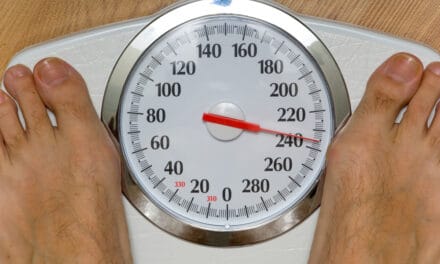So, perhaps you’re celebrating your 40th or 50th birthday? Congratulations, you’ve reached midlife. Four or more decades are no small feat, and you deserve to celebrate your milestones. An unwelcomed guest during this time is a midlife crisis. Either way, a word of warning from a fellow midlifer, don’t use that as an excuse to be less active.
As time goes by, your body begins slowing down. Those usually easy tasks now need more effort to accomplish. Additionally, your metabolism slows down, leading to weight gain. Your muscle mass also declines, your reflexes get slower, and your cardiovascular health also declines.
While this might sound scary, there are numerous ways to keep fit and slow down your aging process through adopting healthy habits and regular exercise.
Table of Contents
What is the Right Path to Enhanced Well Being During a Midlife Crisis?

The most significant changes you can make once you hit midlife are exercise and diet. Even if you haven’t been active before, you can start at 40 or 50 or even 60 years. Proper diet and physical activity are ideal at any age, but especially during a midlife crisis. As years progress, adopting healthy habits benefits help you strengthen your bones and muscles.
Once you have stronger bones, you find it easier to do various activities such as opening doors or getting up from a chair. Simply lifting a book or a can of soup can help you get some exercise.
Be aware of your numbers
When you hit 40, it is the right time to consider your blood sugar, cholesterol levels, blood pressure, and body weight numbers. If you have never checked your cholesterol level before, you need to do so at 40 [1].
Whenever you visit a pharmacy, get your blood pressure checked and see your physician for a simple blood sugar test. Being aware of these numbers will help you and your physician to identify any hidden disease risk factors and deal with them as soon as possible.
Get Your thyroid checked
If you always feel lethargic, your skin and hair lose their luster, and you keep gaining weight without trying, you may consider getting your thyroid function checked. The thyroid gland helps in regulating your hormones and controlling your energy levels. At 40, that is when it decides to show its undesirable face.
Getting a test will help you determine if your thyroid is functioning well. While underactive thyroid results from genetic conditions, you can use prescription medicine to starve off its complications.
Do Safe Exercise During a Midlife Crisis

You don’t have to stop doing your favorite exercise because of age or a midlife crisis. People continue staying active even in their 50s and 60s. You can continue golfing, playing softball or tennis, or other activities that you enjoy doing.
However, remember that you are no longer a 25-year-old, so don’t push yourself too hard. As you age, your tendons and muscles get tighter, and you are more likely to get tendon tears and other injuries. Always listen to your body to learn your limits.
Here are some safer exercises for midlifers experiencing a midlife crisis.
- Walking – Taking a stroll is among the best ways to begin a new exercise routine. Whether you choose to take a leisurely walk or do so on a treadmill, walking is a safe activity you can incorporate into your regimen.
- Aquatics – These exercises range from lap swimming to group exercise classes. Start from the shallow end, or if you have always been a great swimmer, you can dare the deep end. Pools offer safer, low-impact chances for everyone to move their bodies.
- Machines – Consider elliptical machines and stationary bikes as they are gentle on your joints. They also allow midlifers to begin slowly. Work at a comfortable intensity and speed and increase the same as you get stronger.
- Strength Training – Strength training is vital to maintaining bone density and muscle tone, lowering your risk of injury and falls. Do strength training exercises at least twice per week. You can opt to lift weights or use weight machines. Also, you can use your body weight or stretchy resistance bands. Exercises such as modified pushups and squats can also help you build strength.
- Prevent Sports Injuries – After 40, injuries are more frequent. However, you can take the necessary steps to reduce your risk of injury. Here are some tips.
- Warm-Up – Before doing any strength training exercises, it is vital to warm up your muscles. Do five to ten minutes on the stationary bike before lifting weights to get a good light warm-up.
- Choose Sports Wisely – Many injuries result from doing the wrong sports for your age, such as high-intensity training. Don’t push your body too far and risk ending up in hospital.
- Do Stretches – Adopt an ideal flexible program besides your strength training exercises. It could be yoga or any other stretching routine that will leave your body supple, reducing your risk of injuries such as tendon tears.
- Choose Machines – Have you been lifting free weights in your 20s and 30s? You might need to switch to weight machines as you hit 40. These are safer and help you avoid any age-related injuries as a result of loss of muscle tone.
- Listen to Your Body – As you get older, if muscle and joint pains last longer than usual, that is a warning to slow down. It would be best if your doctor checked out exercise pain that lasts longer than it should. Remember that you shouldn’t feel like you cannot catch your breath from exercising.
Practice Mindful Meditation

Mindful meditation [2] is excellent for people of all ages. Once you are 40 years old and above, the practice has numerous psychological and physical benefits, especially if you are experiencing a midlife crisis. Mindful meditation helps reduce pain, depression and boost your emotional well-being. Other benefits include:
- It helps manage moods and emotions
- Improves digestion
- Slows the progression of Alzheimer’s
- Improves memory
Conclusion
As time passes, your metabolism slows down, leading to weight gain and loss of muscle mass. Exercise and diet are the most significant changes you can make once you hit midlife or a midlife crisis. If you always feel lethargic, your skin and hair lose their luster, and you keep gaining weight without trying, you may consider getting your thyroid function checked. As you age, your tendons and muscles get tighter, and you are more likely to get tendon tears and other injuries. Taking a stroll is among the best ways to begin a new exercise routine.
Getting a test will help you determine if your thyroid is functioning well. While underactive thyroid results from genetic conditions, you can use prescription medicine to starve off its complications. After 40, injuries are more frequent, and you need to take the necessary steps to reduce your risk. Strength training is vital to maintaining bone density and muscle tone, lowering your risk of injury and falls. You can opt to lift weights or use weight machines.
Also, you can use your body weight or stretchy resistance bands to build strength. You might need to switch to weight machines as you get older – these are safer and help you avoid any age-related injuries resulting from loss of muscle tone. Remember that you shouldn’t feel like you cannot catch your breath from exercising. Mindful meditation is excellent for people of all ages and can help reduce pain, depression, the effects of a midlife crisis, and boost emotional well-being.











